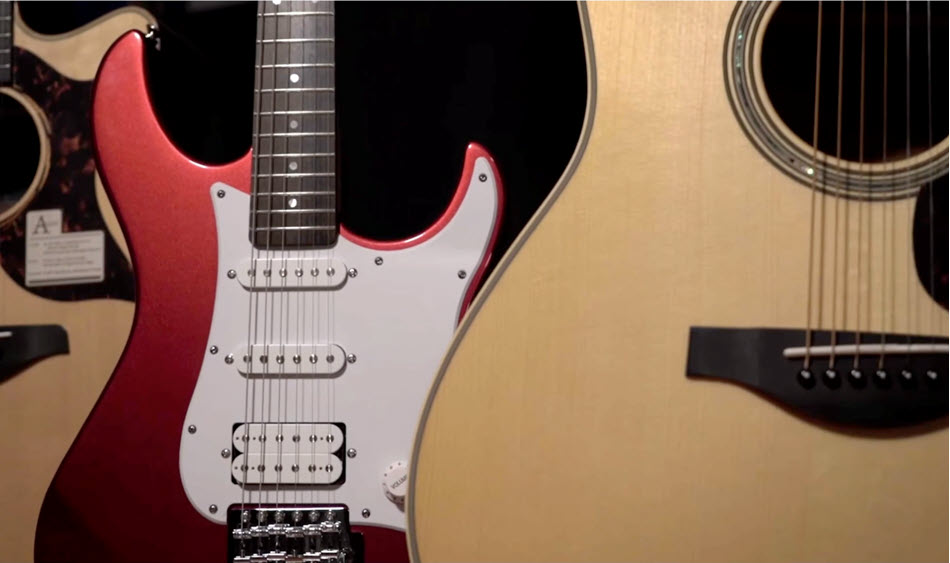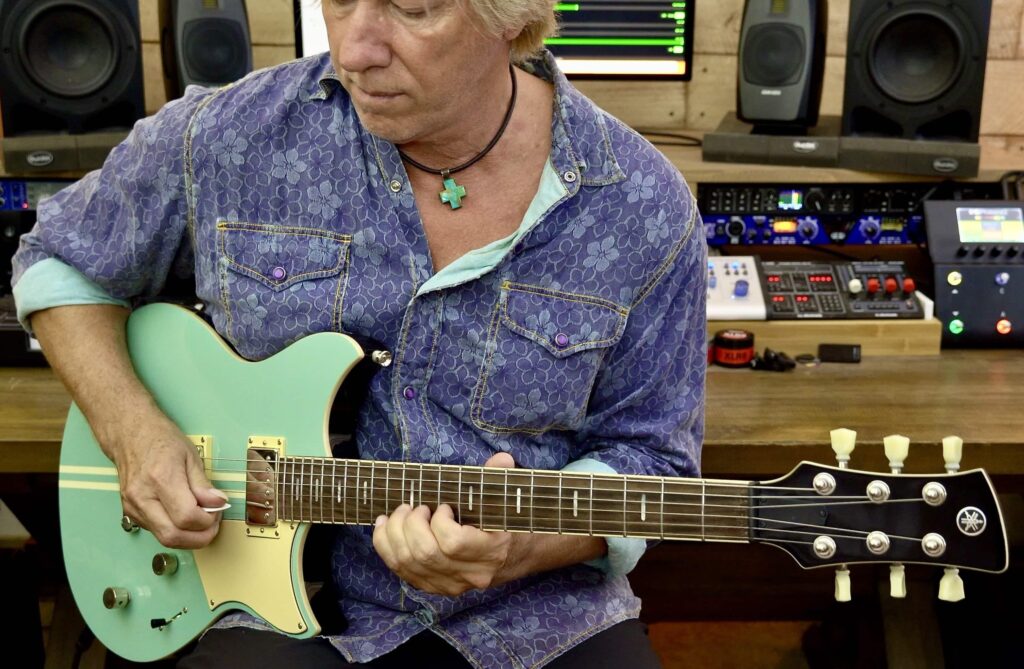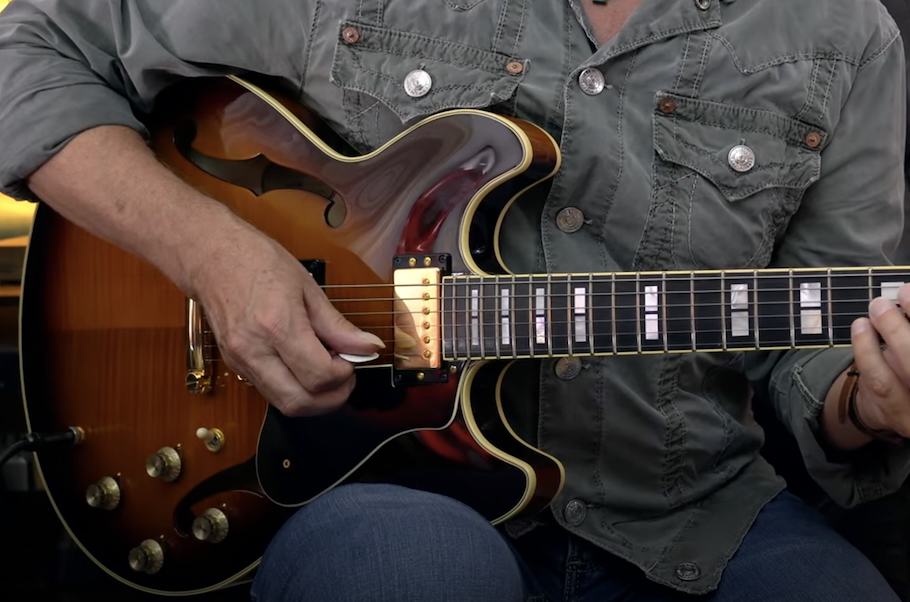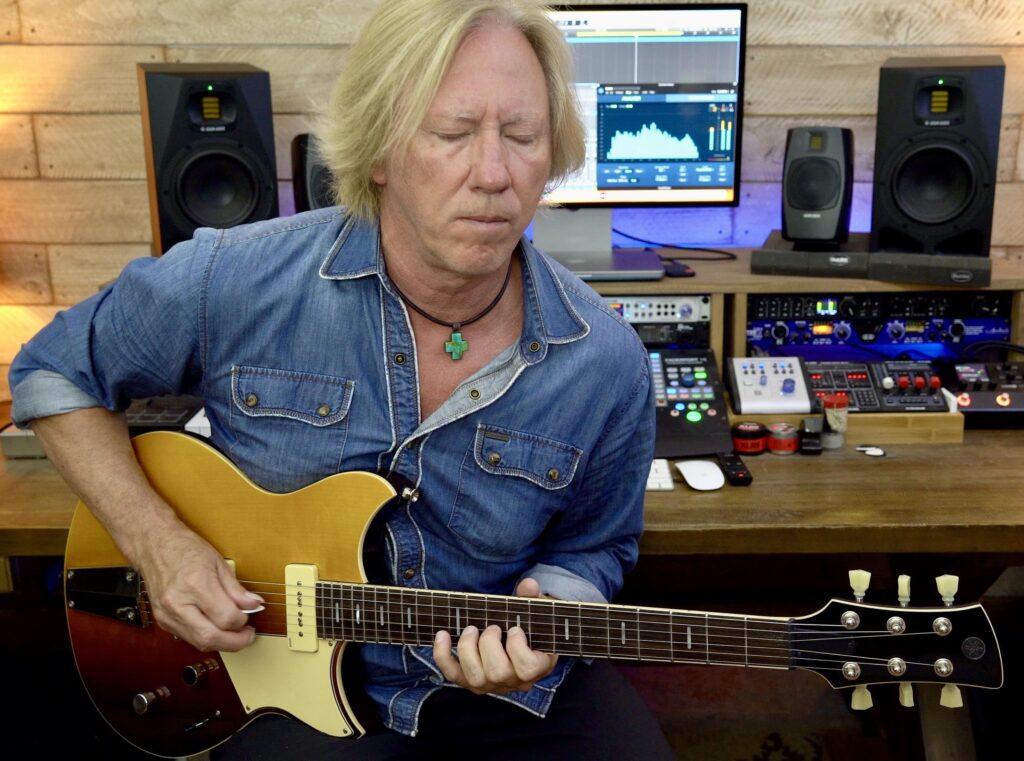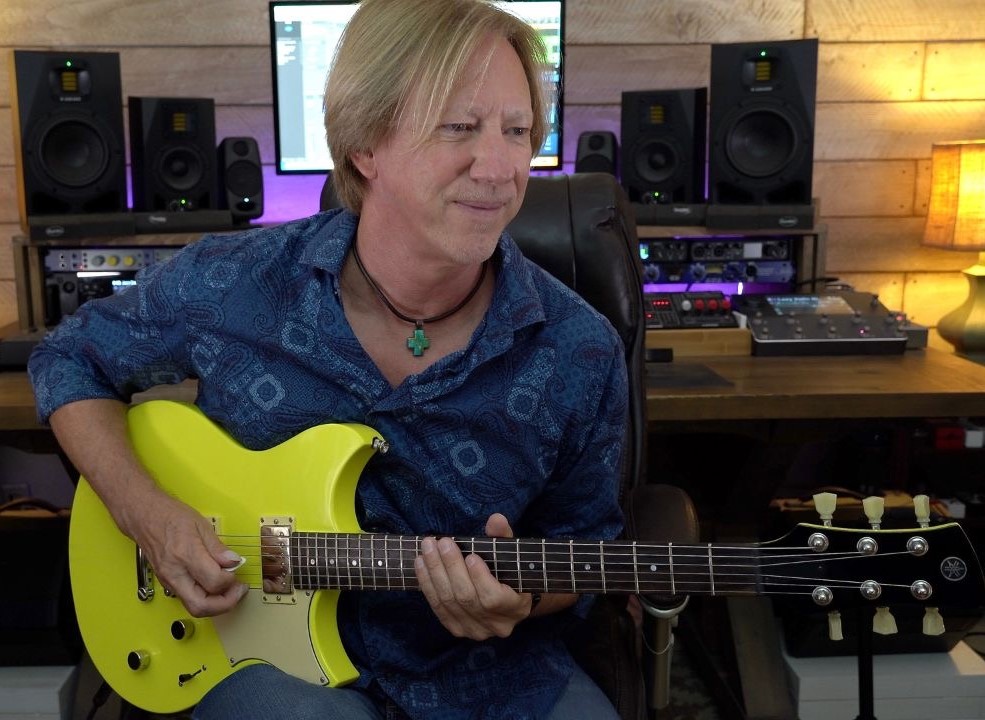Summer School: Alternate Guitar Tunings
Going beyond the basics.
The pitch at which you tune the open strings on your guitar determines the shapes used to create chord, scale and arpeggios on the fretboard.
The standard way of tuning a guitar, from the low E-string to the high E-string, is as follows:
E – A – D – G – B – E
Many guitarists use this tuning exclusively throughout their entire careers, and over the hundreds of years that the guitar has been in existence, a musical “vocabulary” was created using standard tuning.
In standard tuning, the open strings, when strummed, produce an Emi11 (E minor 11) chord, but a world of different chords is created when you use the fretboard to selectively hold down various strings at various fret positions. Of course, you can always alter the tuning of individual open strings — just remember that changing the tuning of even just one string will also change the chord, scale and arpeggio shapes.
One important reason why you might want to change the tuning of your guitar is to create what are called open tunings, where open strings are utilized to create wonderful common-tone drones that sound within a series of chords. This, in turn, allows you to explore new sonic horizons. Our two-part blog series entitled Altered Tunings describes many of the most commonly used open tunings, but in this posting, we’ll take a closer look at some of the more esoteric ones that guitarists sometimes employ.
TUNING TO A SPECIFIC CHORD
As described in Part 1 of the Altered Tunings blog posting, Open G and Open E are two popular open tunings. In Open G tuning, the six strings are detuned as follows:
D – G – D – G – B – D
This creates a G major triad across all six strings, with the second-lowest string (G) acting as the root note. Open G tuning is so popular with Keith Richards of the Rolling Stones that he literally removes the low E-string from some of his guitars altogether!
In Open E tuning, the six strings are detuned this way:
E – B – E – G# – B – E
Here, the pitch of the A-string is raised to B (the fifth of an E major chord), the D-string to E (the root) and the G string to G# (the major third). Essentially this tuning creates an E major triad across the six strings.
But here’s the real magic behind both Open G and Open E tuning: you can play all the other major chords along the fretboard by simply placing your first finger across any given fret. Here’s the way this works with Open G tuning:

Being able to create full chord tones across one fret makes it easy to hit the right notes when you play slide guitar — it can be really difficult to play slide in standard tuning, especially when it comes to navigating the B-string. Open G and Open E tunings are also used often when playing blues and blues rock.
MAKE MINOR CHANGES
If you want to change major open tunings into minor tunings, it’s easily done. For example, you can create an open G Minor tuning by simply lowering the major third in the tuning from B to B♭:
D – G – D – G – B♭ – D
Similarly, you can create an open E minor tuning by lowering the G# to G:
E – B – E – G – B – E
ADD CHORD EXTENSIONS
What about changing a chord tone within the open tuning to a chord extension like a second/ninth or a thirteenth (sixth)? There are duplicate tones within each tuning we’ve described so far, so my suggestion is that you change one of those. For example, start with an Open E tuning, then raise the top E-string to F#, which produces a ninth, two octaves above the low E, for an E(add9) chord:
E – B – E – G – B – F#
Or you can create an E7 chord by lowering the top E-string to D, the minor 7th (flat seventh) and raising the G string up to G# (the major third):
E – B – E – G# – B – D
NASHVILLE AND HIGH STRUNG TUNING
One of the coolest things I learned while recording sessions in Nashville was the Nashville tuning, sometimes called “high strung, “high string” or ”angel hair” tuning, although the latter three are slightly different. Essentially, this technique mimics the sound of a twelve-string guitar on a six-string instrument.
You’ll need a spare acoustic or electric guitar to create this tuning, as you’ll be using a hybrid stringing technique.
Here’s how to do it:
- Leave the high E- and B-strings in place on the guitar
- Replace the low E-string with a D string and tune it up to E an octave higher than usual
- Replace the A-string with a G-string and tune it up to A an octave higher than usual
- Replace the D-string with a B-string and tune it up to D an octave higher than usual
- (Required for Nashville tuning, optional for high strung tuning) Replace the G-string with a high E-string and tune it up to G an octave higher than usual
You now have three (or four) strings that are tuned an octave higher than they would normally be in standard tuning. Note that some players use the octave strings from a 12-string set for this kind of tuning; I personally just use regular strings as described above and find that the results are just as good, if not better.
This tuning sounds a little bizarre on its own, but when you double strumming parts or fingerpicked passages that are in standard tuning, you create a gorgeous top-end sparkle that really sweetens the sound of an acoustic guitar part.
Using a shorter scale acoustic guitar like the Yamaha CSF3M allows for that extra tension on the strings. You may also want to consider using a light gauge set of electric strings on the acoustic for this tuning, which is what I did for the video below.
Be careful when tuning the E and B strings up a minor third, and be extra light with your strumming hand when performing those high-string parts so as to not break those high-tension wires. Here are a few audio clips that demonstrate standard tuning and how well it can combined with Nashville tuning. We’ll start with the basic part, played on a Yamaha FS9 RX in standard tuning:
Now here’s a counterpoint, played on the aforementioned CSF3M in Nashville tuning:
Finally, here are both parts, played together:
USE A CAPO
Whatever tuning you decide to use, remember that you can change the key of that open tuning by using a capo. For example, the open G tuning can become an open B♭ tuning by placing a capo at the third fret, or an open A♭ tuning by placing a capo at the first fret. The options are endless.
(You can find more capo ideas in my blog posting The Art of Using a Capo.)
EXPAND YOUR MUSICAL VOCABULARY
Creating a chord vocabulary of shapes within these new tunings is where the fun begins. Below are some really nice voicings within the Open G tuning for you to learn, but the best way to create something special is to move finger shapes around until you find something fresh and exciting to your own ears. You may love the sound of Open D Minor, for example, and decide to stay there for inspiration while writing songs or discovering harmonic fragments.
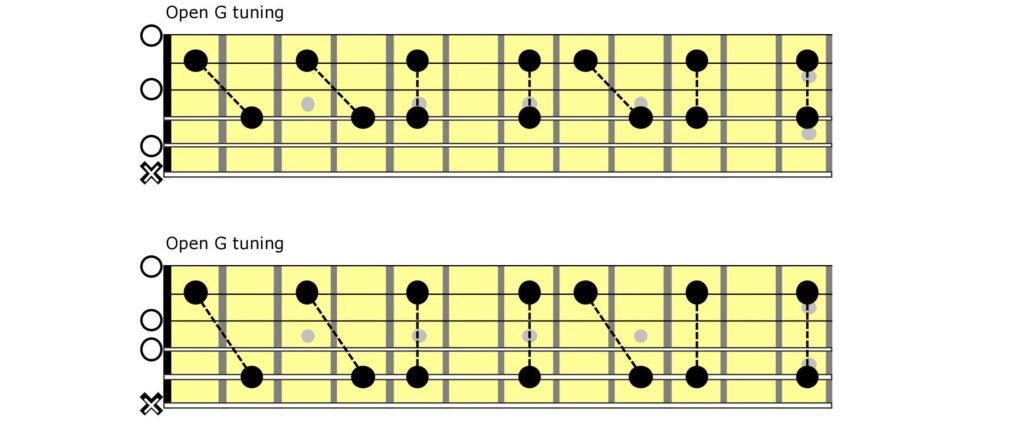
THE VIDEO
This video demonstrates a piece of music I wrote specifically to demonstrate a few of the ideas discussed in this article. The main fingerstyle guitar part is performed on a FS9 RX tuned to Open G and then capoed at the third fret, so I’m actually playing an Open B♭ tuning.
The high string guitar part is played on the CSF3M using Nashville tuning, also capoed on the third fret. I’m literally doubling the part I played on the FS9 RX and creating that lovely faux twelve-string guitar part on the descending lines.
The electric rhythm parts are played on a Yamaha PACP12M Pacifica Professional in standard tuning, capoed at the third fret … which again puts the guitar in the key of B♭. The solo lines are also in B♭, but played without a capo.
THE GUITARS
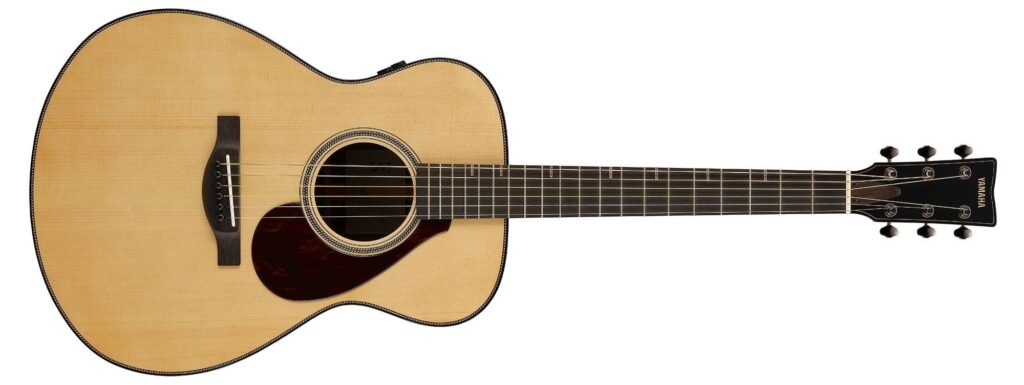
The FS9 RX used to create those sweet-sounding fingerpicked lines features a solid Adirondack spruce top and an Indian rosewood back and sides. Its Atmosfeel™ three-way pickup system translates guitar tones faithfully using a sheet sensor on the top of the instrument, an internal microphone and an undersaddle transducer. Here’s what the Atmosfeel controls look like:
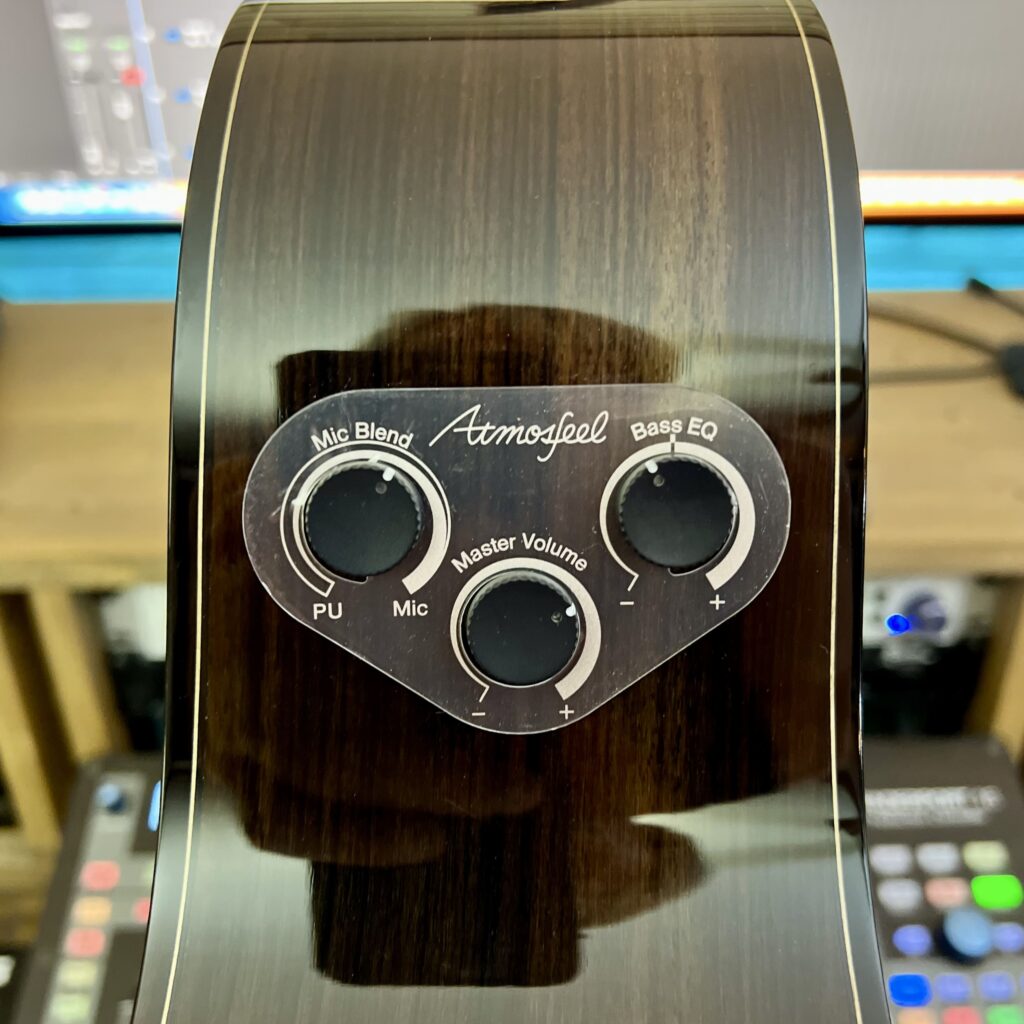
I usually record the FS9 RX direct to my DAW. I set the microphone level to around 2 o’clock on the dial, back the bass control down to about 11, and the guitar sounds like it’s being miked up in an expensive studio.
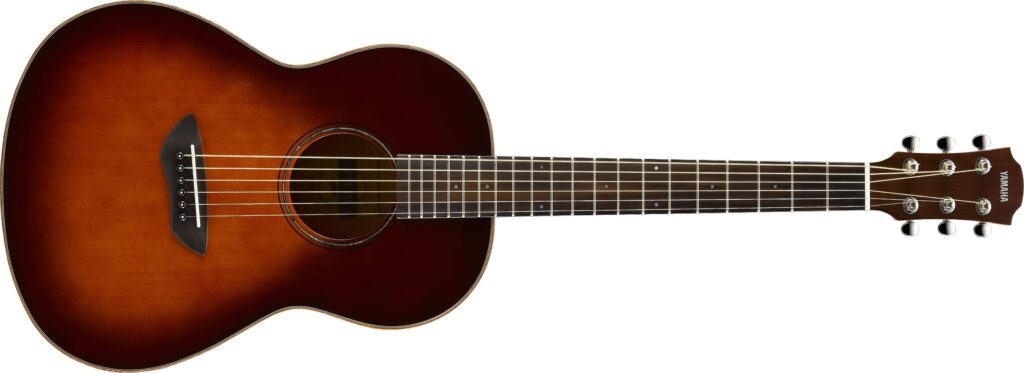
The CSF3M parlor size guitar has a short 23 5/8″ scale, making for a lower string tension, and is therefore a great choice for those high string guitar parts. Its solid Sitka spruce top and solid mahogany back and sides project a huge sound for such a small instrument, and the undersaddle passive piezo pickup allows me to capture everything direct to tape through the end-pin jack with zero fuss.
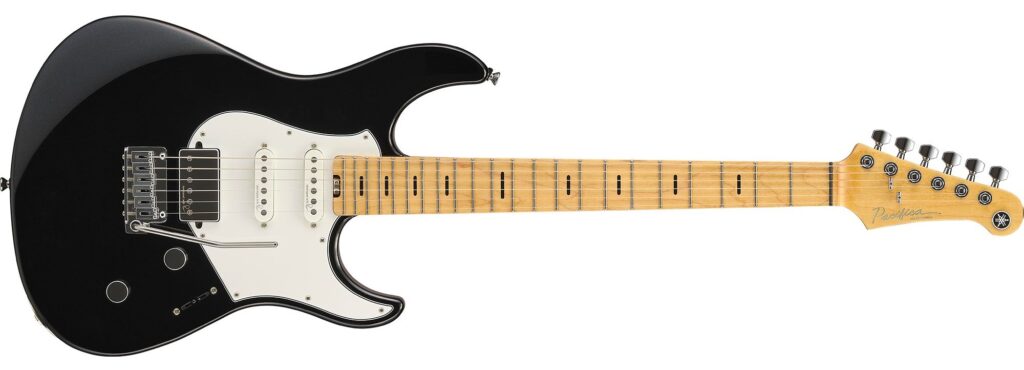
The Pacifica Professional may just be the perfect electric guitar for recording sessions. Chordal shimmers sound smooth and articulate using the Gotoh two-point tremolo system, and its Reflectone pickups (created by Yamaha in collaboration with acclaimed audio manufacturer Rupert Neve Designs) have a unique tonal clarity that lets the chords ring and the single notes shine, making it suitable for just about any style of music.
THE WRAP-UP
There are so many ways to tune guitars for different sounds, and many of the world’s top guitar players utilize open tunings (or create unique new ones) specifically to write a song or craft a musical arrangement.
Don’t expect instant results, but do expect the unexpected to happen if you stick around long enough to find a few nice chordal passages. Often shapes will repeat further along the fretboard or have similar shapes on different groupings of strings, allowing you to develop ideas into fully formed songs.
So if you’ve been looking for a way to explore new sounds outside of the standard set of tunings, consider exploring this new realm of shapes and possibilities using open tunings and a capo. I think you’ll be pleased with the results!










